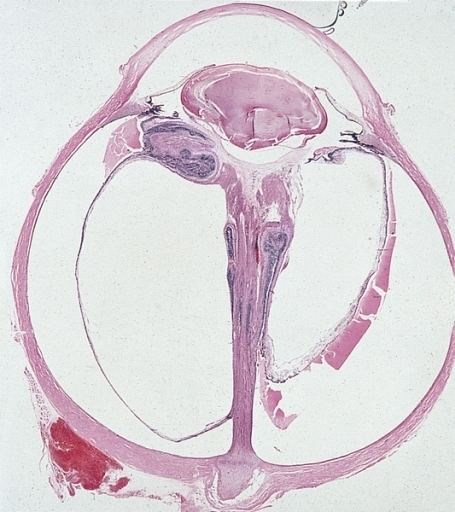Specialty medical genetics ICD-9-CM xxx | ICD-10 Q14.0 | |
 | ||
Persistent hyperplastic primary vitreous (PHPV), also known as Persistent Fetal Vasculature (PFV), is a rare congenital developmental anomaly of the eye that results following failure of the embryological, primary vitreous and hyaloid vasculature to regress. It can be present in three forms: purely anterior (persistent tunica vasculosa lentis and persistent posterior fetal fibrovascular sheath of the lens), purely posterior (falciform retinal septum and ablatio falcicormis congenita) and a combination of both. Most examples of PHPV are unilateral and non-hereditary. When bilateral, PHPV may follow an autosomal recessive or autosomal dominant inheritance pattern.
Contents
Causes/association of bilateral PHPV
- Trisomy 13 (Patau syndrome)
- Norrie disease
- Walker-Warburg syndrome
- Autosomal dominant
- Autosomal recessive
Symptoms
The primary vitreous used in formation of the eye during fetal development remains in the eye upon birth and is hazy and scarred. The symptoms are leukocoria, strabismus, nystagmus and blurred vision.
